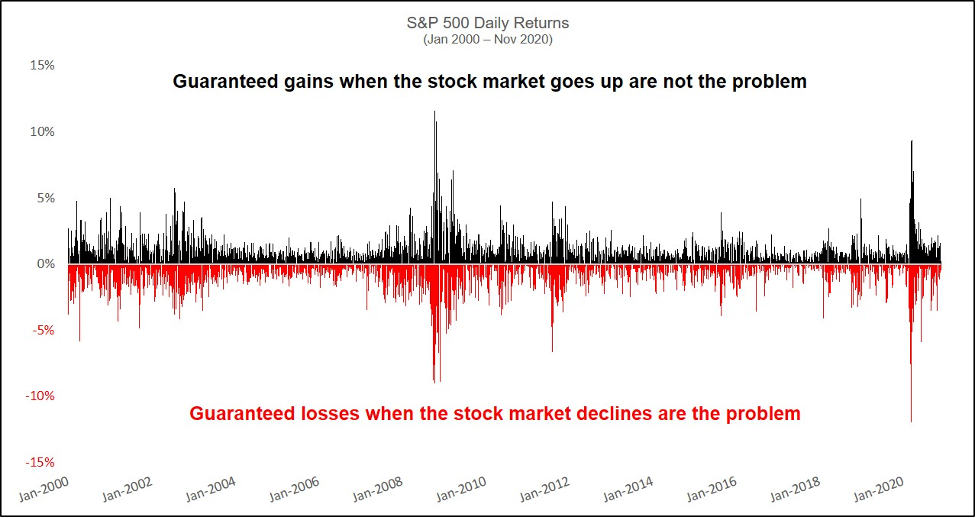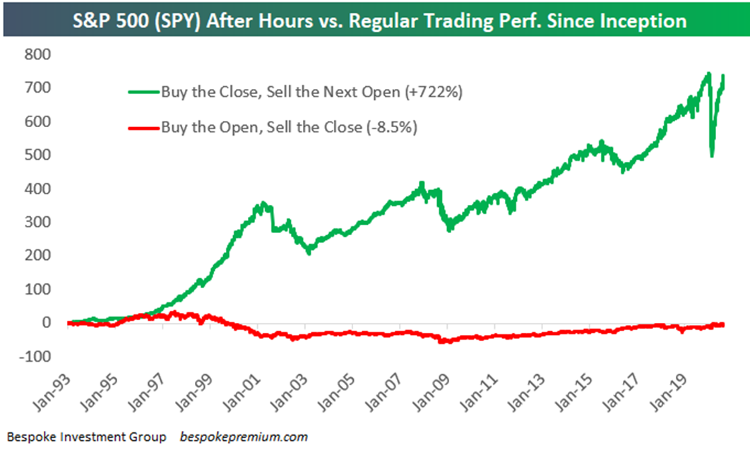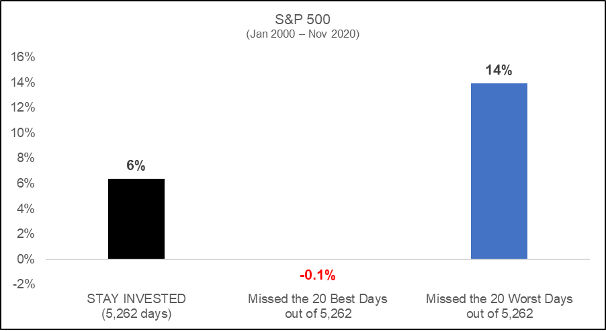[In developing new solutions to an old problem, whole new avenues can open up just by challenging traditional thinking and purposefully changing your perspective to ask tough questions. Especially in our new business environment of accelerating change, every operating idea needs to be regularly challenged. Not to worry though as good established ideas will always stand up to scrutiny, but stand up they must: Why are we still using this approach? Is there any way we can strengthen or further support what we are doing? Are their new tools or approaches we could use to enhance our methodology? Are there things changing in the markets or investor behavior that we need to address?
Sometimes it is not novelty or something wholly new that drives change, but just a different application of an old idea or looking at something from a different lens to uncover new ways of doing things. This formula of opening up your thinking and developing a different mindset helps you see what others don’t or won’t and allows you to build a path to truly different solutions to problems. Risk management has been going through this evolutionary path since the 2008-9 market downturn where standard risk management definitions and approaches, like Modern Portfolio Theory, seem to be openly under reconstruction and dynamic experimentation.
To explore this further, the Institute was recently introduced to Eric Dugan, Chairman and Portfolio Manager, of 3D Capital Management – an investment management firm that exclusively positions itself as an active, defensive, equity manager for investors who are seeking a proven solution to stock market declines. The firm has over 100 years of compelling investment experience, including researching and developing equity risk mitigating strategies and managing money for multibillion-dollar firms. We were curious to learn how their goal to protect client equity portfolios led to their singular focus on profiting from stock market declines in the S&P500.]
Hortz: Can you share with us the motivations and thought process you originally went through in creating your investment approach? How did you see your challenge and why did you take the road you took in redefining traditional portfolio and risk management processes?
Dugan: Conventional wisdom teaches stock market investors to be patient, think long-term, and be willing to endure the pain associated with stock market declines. I love the stock market as a long-term investment, but my motivation in creating 3D Capital Management was simple: I don’t like pain and I don’t like losing.

As the S&P 500 chart above reminds us, guaranteed losses when the stock market declines are the problem. We are problem solvers and decided to do something about this problem. Our solution encourages stock market investors to stay invested in the stock market for the long-term AND manage stock market declines (i.e. risk) over the short-term.
3D Capital’s expertise is managing stock market declines. Our solution to stock market declines is an S&P 500 program called 3D Defender which seeks to identify intraday weakness in the S&P 500, profit from it, and step aside during rallies.
I have never really thought of our investment approach as redefining the traditional portfolio and risk management process. Taking this road is the most logical solution. The data makes that abundantly clear. We are not proposing an either/or solution. 3D Defender was created to protect investors from stock market declines. We assume the investor is going to stay invested in the stock market for the long-term to take advantage of rallies AND wants to manage the pain associated with stock market declines.
The stock market is going to move up and down forever. Stock market declines represent risk. Stock market declines also represent an opportunity to profit. 3D Capital has a long history of profiting from stock market declines.
The most important question for stock market investors and their financial advisors is “Do you have anything in your portfolio that specifically seeks profits from stock market declines?”
Hortz: How did you go about developing your investment methodology? Was there any research or events that informed or guided your path?
Dugan: I was fortunate to begin my investment career three decades ago working for and being mentored by legendary hedge fund manager Monroe Trout who is featured in the book New Market Wizards. At Trout Trading we invested in multiple stock, bond, currency, and commodity markets around the world with tight risk controls, and I oversaw the Pacific Rim time zone. Working at night it became clear to me that the world is one big global-macro flow chart.
Our investment methodology is based on the view that markets move in a Global Relay Race that begins in Asia, spreads to Europe, and ends in the U.S. Our view is that market movements around the globe can influence daily price fluctuations in the S&P 500. In our efforts to capitalize on these fluctuations, we take a global-macro approach to monitoring and analyzing global price action in stocks, bonds, currencies, energies and metals, and then distill this information into a single opinion about the likelihood and direction of daily price fluctuations in the S&P 500. I am grateful to have spent my entire career managing risk one day at a time.
The US markets and specifically the S&P 500 is the last market to “open”. It is logical to think that all of the markets that open prior to the S&P 500 “open” can provide statistically significant biases and clues to the daily direction of the S&P 500. 3D Capital’s systems are based on decades of data and statistically significant patterns that are logical, symmetrical, and persistent.
The Global Relay Race is nothing new and works for identifying the daily price fluctuations in the S&P 500 in both directions. Perhaps the most famous example of a stock market decline is referenced in this link to the 1987 stock market crash. https://corporatefinanceinstitute.com/resources/knowledge/trading-investing/black-monday/ and more specifically this bullet point:
The crash occurred worldwide, starting in Hong Kong and spreading throughout Asia and Europe before reaching the United States.
Hortz: Modern Portfolio Theory teaches investors to diversify into non-correlating asset classes to protect from risk. Why do you say that the best way to truly protect your stock market portfolio is to sell the market when it is going down?
Dugan: Our Managing Director Tom O’Donnell started his investment career in 1987 working for the Virginia Retirement System (VRS) - a pioneer among public pension funds investing in alternative investments in the late 80’s and early 90’s. Tom has over 30-years of traditional and alternative investment experience and he is the first one to remind investors that diversification is a good thing, but after you scatter your eggs into other baskets you still need to protect the eggs in your stock market basket. Buying Gold, US Bonds, Bitcoin and other asset classes will not necessarily help you profit from a falling stock market. Yes, those assets may go up, however in this “risk-on risk-off” environment they did not in 2018 and or Q1 of 2020. 3D Defender was built to protect your stock market eggs.
Also, years ago, the correlations among different asset classes were lower and interest rates were higher. Unfortunately, with interest rates near zero, the bond market has entered a challenging period. Experts say the safety associated with fixed income is gone. Stock market volatility and zero interest rates are causing investors to rethink their asset allocation.
Risk happens fast in the stock market. Focusing on the long-term and enduring that pain is simply not a viable solution. The best market to use to manage stock market risk and profit from stock market declines is the stock market itself.
Hortz: How does your strategy respond to the risk of market declines in the S&P 500? What indicators are you focused on?
Dugan: Our solution to stock market declines is our 3D Defender Program. For simplicity, 3D Defender is one market (S&P 500), one side (Short side), one day at a time (No overnight positions). Many ask why we don’t hold positions overnight and the chart below will make it very clear that historically the market goes up overnight and down during the day.

Our systems are collecting data 24/6 from multiple markets around the world and are continuously analyzing global factors that drive the price activity in the S&P 500. We follow a short-term, highly selective, and sophisticated investment process. Managing the risk one day at a time means we can adapt to the daily narrative of the stock market and seek to provide protection when investors need it, not when they don’t. The stock market goes up more than it goes down so remaining nimble to the message of the market is key.
All investment decisions are made with strict risk controls and unwavering discipline and persistence. We take great pride in profiting and protecting stock market investors from stock market declines. We also take great pride in standing aside and not giving the profits back during market rallies.
It is important to provide the context that 3D Defender’s success has been achieved during the longest and strongest bull market and the fastest bear market in history, which happened overnight.
Hortz: How do you respond to those who state that what you are doing looks like timing the market and nobody has been able to ever do that successfully over time?
Dugan: I would first ask them to please define market timing. Then please define rebalancing. Other questions would include have you been more aggressive with your asset and stock allocation earlier in life than later and do you rotate out of “riskier” stocks and assets during a recession? Those familiar with this adage “Time in the market is more important than timing the market” can clearly see in the S&P 500 chart below that this is only half of the data. Missing the worst days matters more than missing the best days.

The stock market is an important long-term investment and we actively manage the pain and risk associated with stock market declines.
Using the S&P 500 chart below as a visual. Investors hire some managers to make money for them when the stock market goes up (black arrows). 3D Capital is the firm you hire to help you make money when the stock market goes down (red arrows).

Hortz: How best would you recommend advisors employ or allocate your investment protection strategy to client portfolios?
Dugan: As a reminder, 3D Defender only invests in the S&P 500, so it fits naturally into an investors’ equity allocation. The investment strategy is also tremendously capital efficient. Advisors should consider using 3D Defender as a capital efficient overlay to their clients’ equity portfolios and is available to qualified investors via separately managed accounts.
The S&P 500 chart below shows that as the stock market grinds higher, it also repeatedly sells off sharply. Stock market declines are real and a risk that needs to be managed. Stock market risk is likely the largest risk in an investor’s portfolio and investors deserve to have it defended and protected every day. If you are not taking advantage of the downside, you are giving up upside.

Clearly the stock market does not move in a straight line. This is why the question we asked before is so important: “Do you have anything in your portfolio that specifically seeks profits from stock market declines?”
Hortz: Any other thoughts or recommendations you would like to share with advisors?
Dugan: You would not expect a short S&P 500 program that has a negative correlation to the S&P 500 to have succeeded during the longest bull market in history. 3D Defender has a long history of profiting from declines in the S&P 500. We are happy to share our live 10-year track record with you.
If you and your clients are seeking a different solution to equity risk management and a program with a long history of positive performance during down months in the S&P 500, we welcome the opportunity to begin a dialogue.
Related: Socially Responsible Investing: Visceral Impact and Consequences


